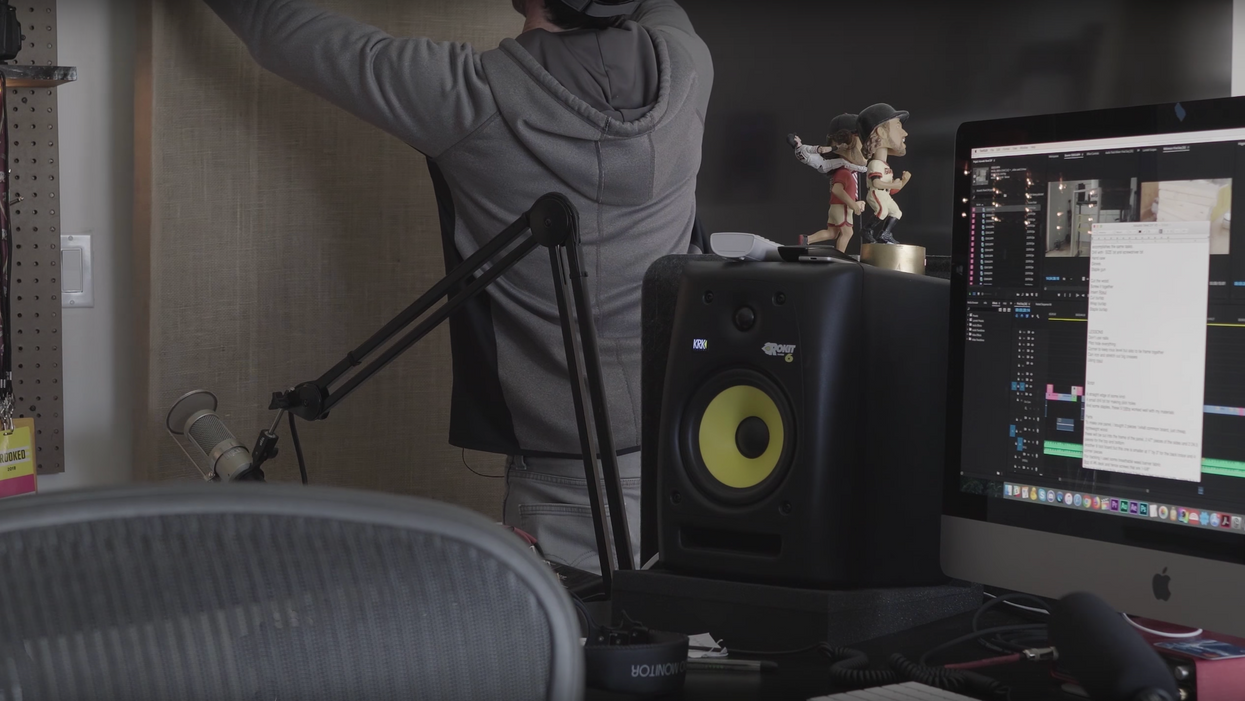Learn How to Make Your Own DIY Sound Panels for Your Home Studio
If your audio isn't up to snuff in your home recording studio, these DIY acoustic sound panels might help.

One key to recording great audio in a studio, whether it's in a professional space or your home office, is by reducing the amount of reverberation in the room. This can be tricky to pull off, especially if the space is large, empty, and full of reverberant surfaces. There are some quick DIY solutions to cut down on echoes and reverb, like covering surfaces with heavy blankets, clothes, or towels, but if you want a more permanent solution, like something you can actually install, check out this tutorial from Ray Ortega. In it, he teaches you step-by-step how to build your very own acoustic sound panels using a few boards and some relatively inexpensive rockwool insulation. Check it out below:
The key ingredient to a build like this is definitely the sound-absorbing material, which in this case is rockwool insulation. The material used to make sound panels depends on the manufacturer, but typically you're going to see either foam or rockwool (mineral wool). In fact, most commercial buildings use rockwool to insulate sound walls to cut down on reverberation, as opposed to foam, which is usually used to make foam wedge sound panels. An alternative to rockwool would be rigid fiberglass insulation. Though it tends to be more expensive (and toxic if burned), this material is lightweight and easier to cut into preferred dimensions. This type of insulation can come wrapped in foil, so if you do opt for rigid instead of rockwool, you might want to go with the kind that isn't foil-faced (or somehow remove the foil...which is pretty difficult).
My dad has been in the insulation business for over 35 years and I have definitely "gone shopping" in his warehouse when I've needed materials to reduce reverb on set. What I've found is that sound insulation is by far the best option when trying to cut down on reverb. However, other types of insulation, regardless of R-value, work pretty well for these purposes. It can be messy, itchy, and irritating to your skin, but if you're looking for a permanent solution for your recording studio, it might be worth it.
Here's what you'll need to build Ortega's DIY sound panels:
Materials
- Rockwool sound insulation (1 bag)
- Burlap fabric
- Weed barrier fabric
- 5/16" staples (1 box)
- 1-5/8" screws (1 box)
- 1"x4"x8' board (x2)
- 1"x3"x10' board (1)
Tools
- Staple gun
- Saw
- Tape measure
- Straight edge (Triangle ruler)
- Drill
- Drill bit (7/64)
- Screwdriver (or screwdriver bit for drill)
- Saw horses
- Gloves
- Power sander
Have you ever made your own sound panels? What did you use? Let us know down in the comments.
Source: Ray Ortega

 'The Amazing Spider-Man' (2012)
'The Amazing Spider-Man' (2012) 'Jaws' (1975)
'Jaws' (1975)









